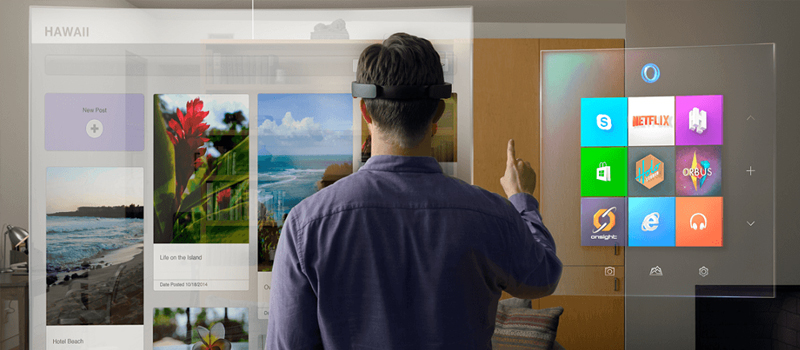
The Asian Development Bank claims, “Asia’s elderly population is projected to reach nearly 923 million by the middle of this century. As a result, the region is on track in the next few decades to become one of the oldest in the world.” For example, in the People’s Republic of China (PRC), there are currently six workers for every retiree. That ratio is expected to shrink to two workers for every retiree by 2040. In Singapore, the ratio was eight workers for every retiree in 2010; by 2030 that’s expected to drop to just three workers for every retiree.
Statistics like these are only going to get worse as the ratio of retirees to workers grows. The ICT skills shortage in the Asia Pacific region has reached critical mass. As reported by the Australian Government’s Department of Jobs and Small Business, telecoms were only able to fill about 45% of job vacancies in 2017, a historic low. It wasn’t for lack of candidates either. For each opening, ICT employers reported having an average of 5.2 applicants per vacancy, of whom, only 0.9 were deemed suitable for the role.
 Across all industries, workers take an average of one to two years to reach full productivity, but in ICT, it can take even longer given the range of niche skills required. “A sector like telecoms requires workers with often niche skills who can be difficult to find. Some locations may not have access to many qualified candidates in the area, which only narrows the pool even further,” said Hoa Ngo, managing director at Comensura, in a 2016 article in the Online Recruitment Resource.
Across all industries, workers take an average of one to two years to reach full productivity, but in ICT, it can take even longer given the range of niche skills required. “A sector like telecoms requires workers with often niche skills who can be difficult to find. Some locations may not have access to many qualified candidates in the area, which only narrows the pool even further,” said Hoa Ngo, managing director at Comensura, in a 2016 article in the Online Recruitment Resource.
The Promise of AR
Augmented Reality, or AR, superimposes a computer-generated image over the user’s view of the real world. It’s different than Virtual Reality (VR), where the user sees only the simulated environment, and the more futuristic Immersive Reality (IR), where the user interacts with the virtual world just as they would the real one.
Furthermore, AR is not new. The technology has been around since the 1960s, but it has typically been seen as more of a gaming/entertainment technology. Only recently have businesses begun to see its potential. However, now that they have, the industrial demand for AR (and VR) is expected to catch up quickly. As reported in the World Economic Forum, Goldman Sachs predicts the global AR and VR market to reach $95 billion (USD) by 2025, with nearly equal shares coming from industry and the creative economy (gaming, entertainment, etc.).
While it may be too early to predict the total impact of AR on the world’s economies, AR has already been shown to improve productivity at the local level. Just last year, Harvard Business Review published an article with an embedded video from GE that demonstrated the performance impact of AR. First, a worker wired a wind turbine’s control box using the company’s current procedures. Then the worker was given a headset which used AR to overlay line-by-line instructions in front of the control box. The device improved the worker’s performance by 34%.
 7 Ways Augmented Reality Can Help Overcome the Shortage of Skilled Workers
7 Ways Augmented Reality Can Help Overcome the Shortage of Skilled Workers
As Australia’s hiring challenges show, ICTs in some parts of Southeast Asia are still attracting candidates to their job openings despite the declining ration of workers to retirees. Their challenge is to increase the range of candidates deemed suitable for the open roles.
Other countries, like Japan and the PRC, simply can’t find enough workers to fill open positions. Their challenge will be to increase the pool of workers either by casting a wider net or finding ways to effectively onboard less skilled or experienced candidates.
Taking our cue from the GE demonstration, here are seven ways we see AR helping Southeast Asia ICTs overcome the skills shortage crisis.
#1 Overcome lack of experience – One way to onboard newer technicians is to have them job-shadow or apprentice with a more experienced worker who can demonstrate how to perform each task. AR can minimize the overhead of onboarding new technicians by overlaying virtual demonstrations on top of the work to be performed, eliminating the need to assign two individuals to every task. This will become increasingly important as the ratio of new hires to experienced workers increases.
#2 Shorten training time – Technical roles can’t always be taught effectively in the classroom setting. Training in a lab-type environment helps, but physical labs can be expensive to set up and maintain. Creating a virtual lab that allows the learner to interact with real-world simulation can provide a new hire with “hands-on” experience as needed from wherever they are.
#3 Reduce training expenses – Sending workers to a central location for training is expensive and takes time. If the training is for recertification, it also reduces valuable time in the field. Users can access AR training anywhere/anytime they have access to a VR device. Already, the cost of app development and the hardware (an advanced pair of AR glasses can cost a couple of thousand dollars) can be less than the cost of sending workers to a central location for training.
#4 Address compliance requirements – For ICTs that need to comply with specific regulations or local business practices, hiring inexperienced workers is even more of an issue. AR puts processes and instructions at their fingertips, helping to ensure the proper procedures are followed.
#5 Overcome language barriers – Due to low birth rates, ICTs in countries like Japan are hiring an increasing number of foreign workers. AR can be programmed to provide instructions in multiple languages to help overcome the lack of language proficiency.
#6 Overcome learning disabilities – Around the world, the number of people being diagnosed with disabilities such as Asperger’s Syndrome and dyslexia are increasing. These challenges don’t preclude them from a career in ICT. In fact, people with Asperger’s may have a higher aptitude for ICT than the neurotypical population due to their often higher intellect and ability to focus on a task. AR can help individuals overcome their disabilities by tapping into their unique learning styles.
#7 Attract more workers – According to Cisco, the Asia Pacific region, which already accounts for the most data traffic, still grew by 71% in 2016 – second only to the Middle East and Africa, which grew at 96%. Electronic devices are a way of life for younger workers, and they expect to be able to use them on the job as well as off. An AR strategy can help ICTs present potential candidates with a more compelling career opportunity.
We Want to Hear from You!
Let us know how you see AR. Is it a technology you’re actively looking into, one you’re keeping an eye on, or are you not convinced yet that it holds promise for the ICT industry? We want to hear from you!







